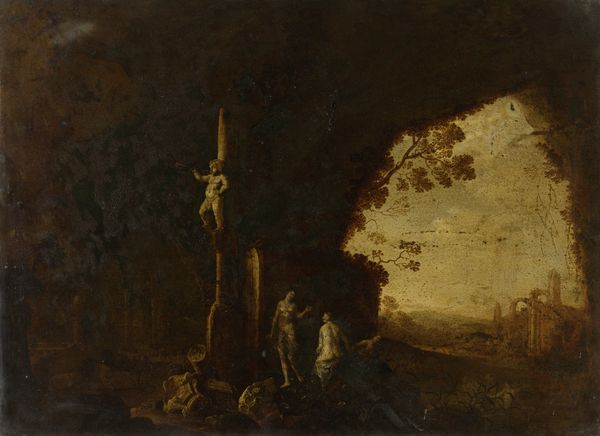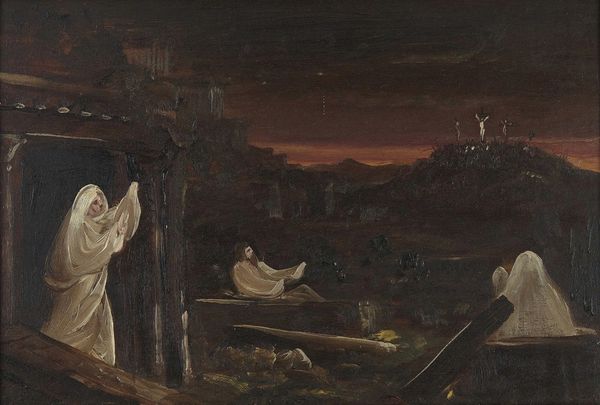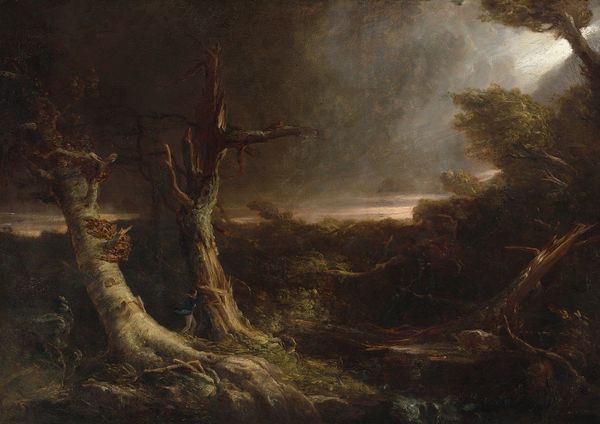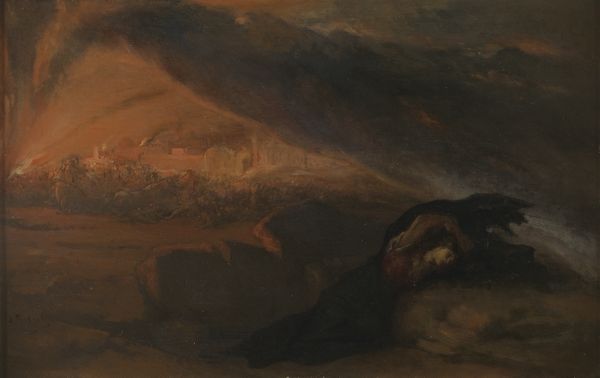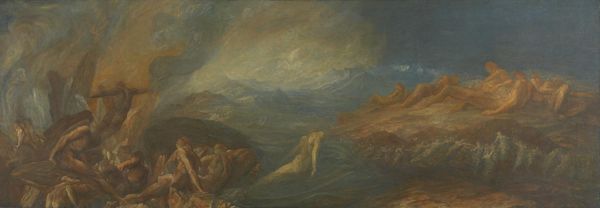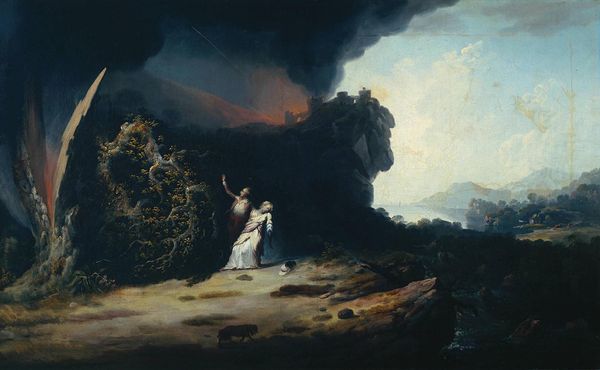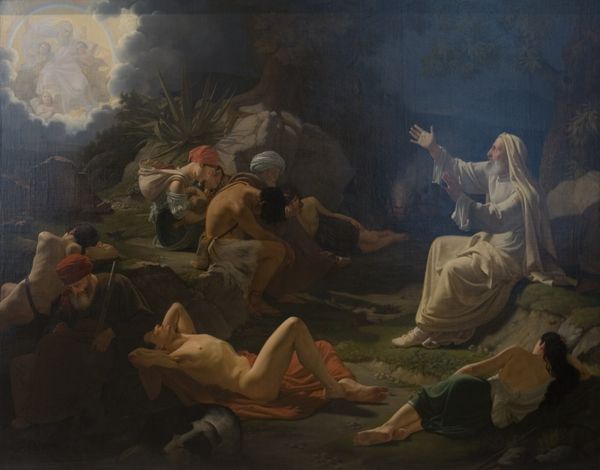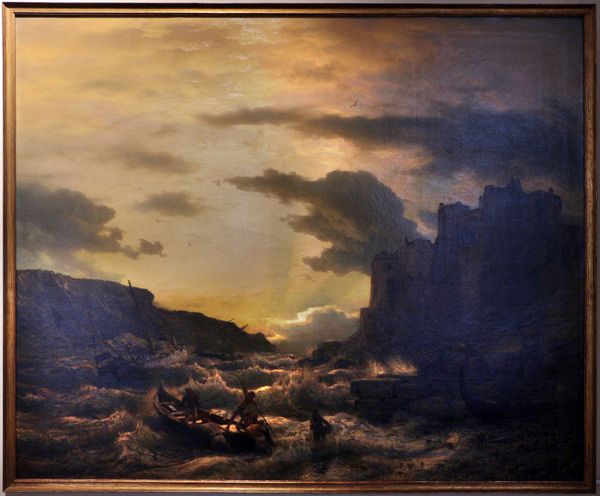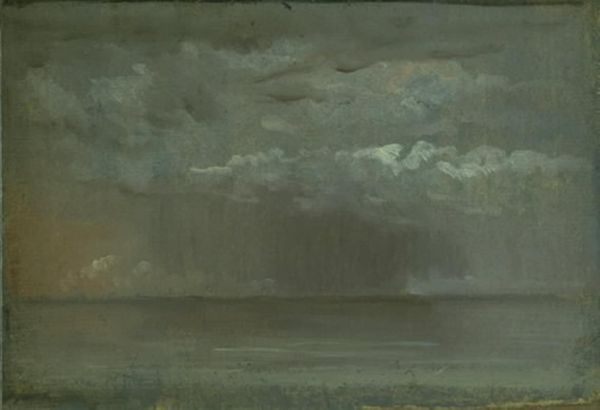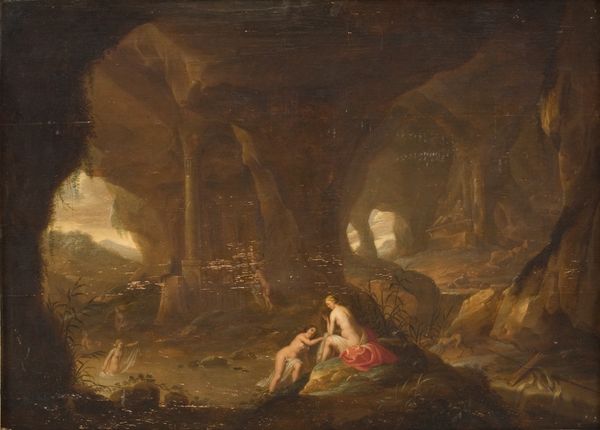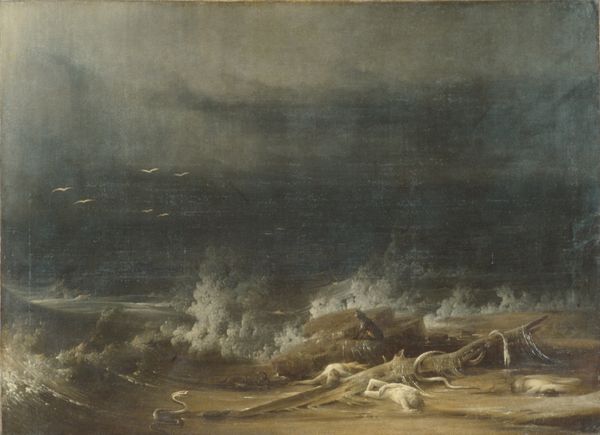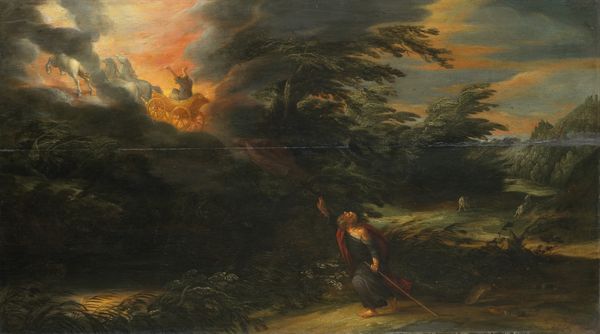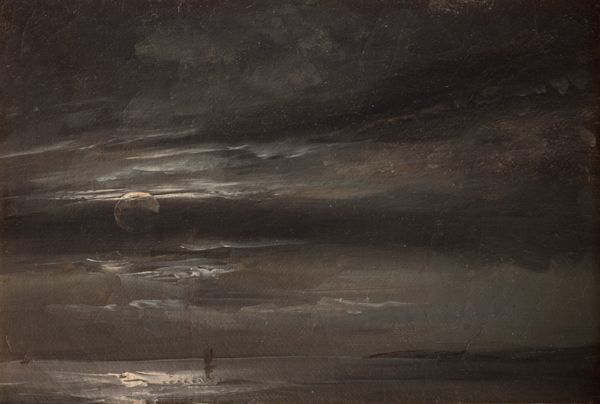
painting, oil-paint
#
allegory
#
narrative-art
#
painting
#
oil-paint
#
landscape
#
figuration
#
romanticism
#
chiaroscuro
#
history-painting
#
academic-art
Copyright: Public domain
Editor: So this painting is titled "Dante and Virgil in Hell" by Jean-Léon Gérôme, created using oil paint. It feels incredibly somber and dramatic; almost theatrical with its chiaroscuro. What can you tell me about this depiction of hell? Curator: Gérôme's vision offers insight into the 19th-century academic understanding and reimagining of literary canons. We should think about how popular stories get visualized, repackaged, and re-presented by artists across history, impacting future audiences and perpetuating, or even transforming, those cultural narratives. Why do you think he chose this scene, and this intense contrast? Editor: Perhaps it was a way of aligning himself with the gravitas and importance of Dante's work? Did audiences at the time perceive it as innovative or traditional? Curator: Good question! It probably appealed to a broad public invested in historical narratives but adapted through romantic drama. We must remember how artworks function within larger societal frameworks— the artistic trends, the patronage systems, the public’s expectations all impact reception. This blends classical themes with contemporary sensibility. But, do you feel this picture actually helps explore Dante's views, or something different altogether? Editor: I hadn’t considered it like that – the painting has this academic formality but does it ultimately interpret Dante or simply put it on display? Curator: Exactly. Gérôme uses Dante more to demonstrate artistic mastery within an accepted cultural narrative than delve into Dante's specific theological concerns. He places himself within a lineage of artistic giants by visualizing famous literature, gaining public favor. Editor: That’s a fascinating way to think about it. It seems understanding the social function of this work almost unlocks its meaning. Curator: Indeed. Now consider the politics of imagery— what statements are being made, implicitly or explicitly, when representing classical subjects in certain styles, for certain audiences? Food for thought, right? Editor: Definitely! It changes my whole view on not just this image, but how historical painting creates impact on visual culture.
Comments
No comments
Be the first to comment and join the conversation on the ultimate creative platform.
